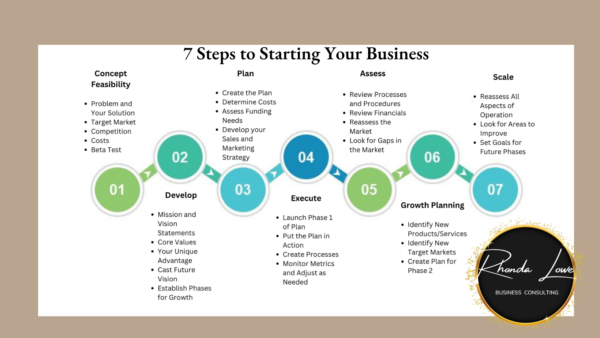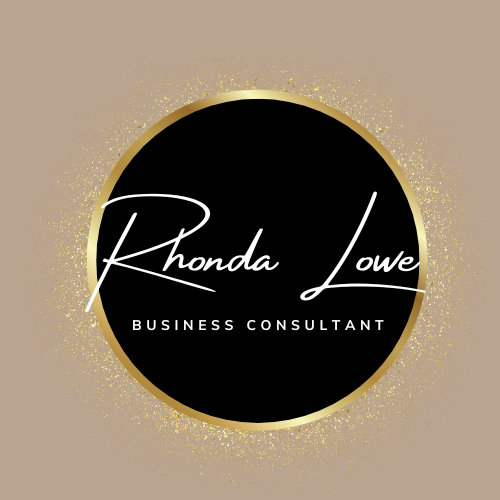
When you start to think about starting your own business, it is important to know that it is a process. This diagram shows the 7 Steps to Starting Your Business.
It’s tempting to just dive in and hope for the best. In this day and age of such high failure rates for small businesses please take the time to get it right.
Let’s break it down.
1. Concept Feasibility
This is where you are in the identifying and testing phase. You do the work to get clarity on what the problem is that your target market has, and how you will solve that problem. Identify who is currently solving that problem for them. Then, start understanding what it will cost you to start this business.
2. Develop Your Foundation
Knowing your Mission and Vision and your core values will set the stage for building a business that will support what is important to you. Identify what it is that is unique to you and your business. This will help you create a Marketing Strategy as well. As your vision for the future of your business becomes clearer, begin to break the vision down into “doable” phases.
3. Start the Planning Process
Determine which Business Plan format is best for you- the Lean Plan or the Traditional Plan. Then get started on it. This will guide you through every decision you will need to make at this stage.
4. Execute
It’s one thing to dream about a business. It’s another thing to create a plan for a business. Nothing else matters if you don’t execute. Use this time to create the processes you will need and make any changes along the way. Pay close attention to your metrics and the things that are working well and the ones that aren’t.
5. Assess
As you go along in the first few months of your business, get obsessive about assessing as much as you can. If it’s not work, ask yourself “why?” This goes for your processes and your financials. Get fresh eyes on what is happening in your market. Are you seeing new trends or new opportunities?
6. Growth Planning
Growth planning should always be part of your thinking. If you identified different phases for your business in Step 2 then bring up the next phase and start that planning process. If you didn’t identify different phases, look at new target markets that you could focus on to generate growth in your business.
7. Scale
Now that you have moved beyond your initial growth stage, how can you scale your business? Review the vision your casted in Step 2 and see if where you currently are, has led you to where you want to be. Scaling usually results in creating new steps to move forward. What’s next for your business?
While this plan looks at the pathway for starting a business, it can be used for growing your business through new revenue streams and ideas as well.
This is where you come shining through as the CEO of your business!
For help with any of these steps, we are here for you!
Email us at:
rhondaloweconsulting@gmail.com
